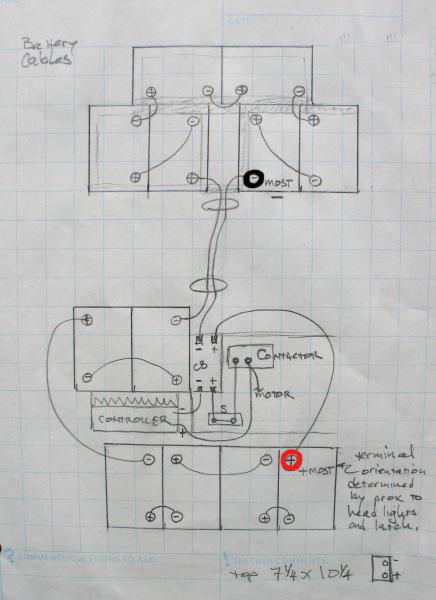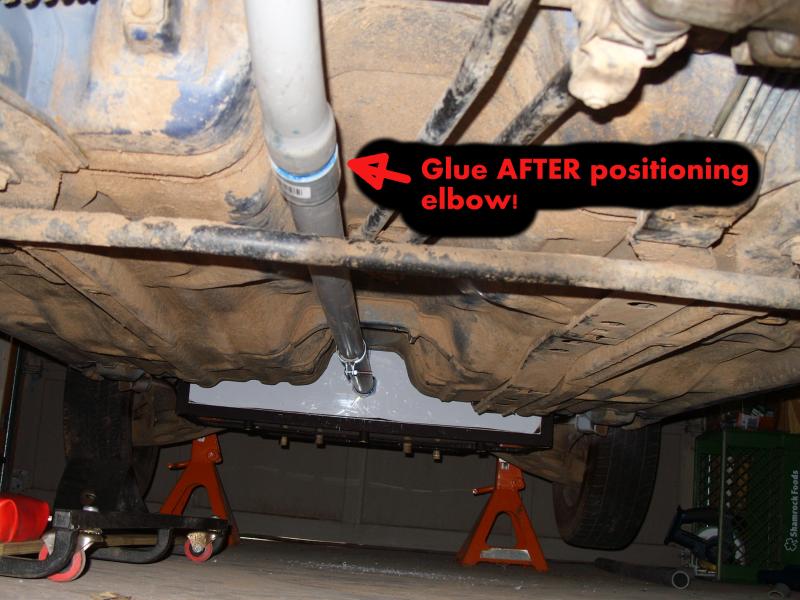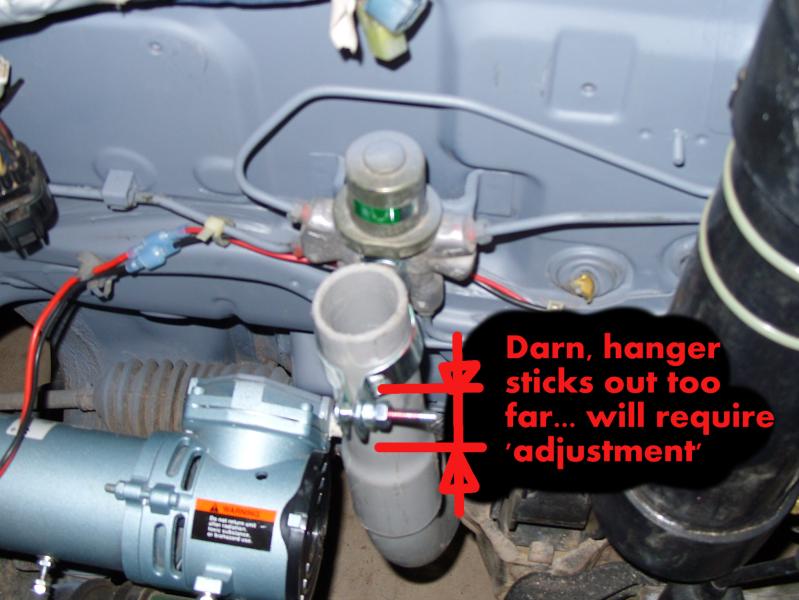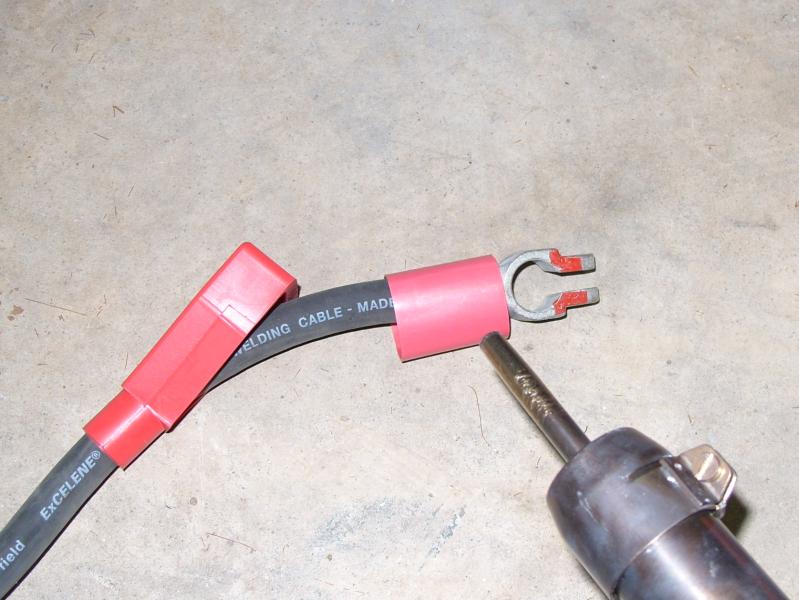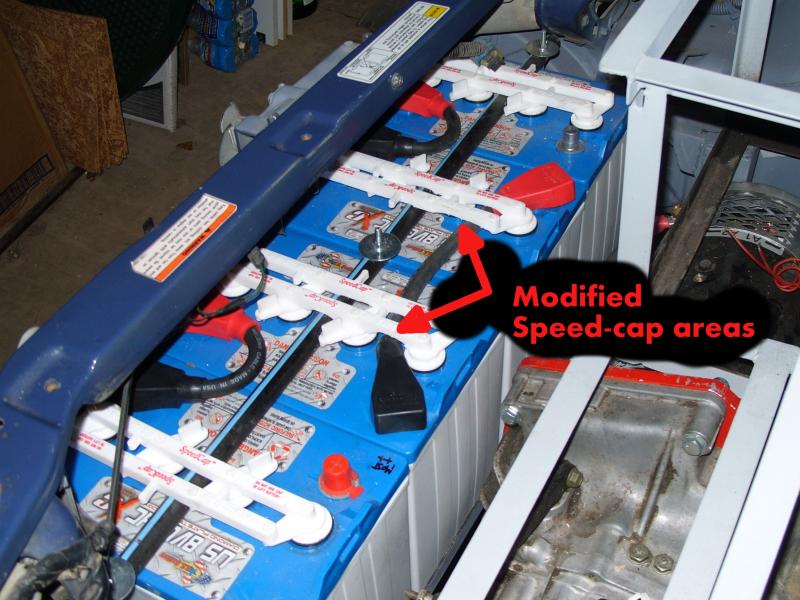|
Battery Cabling for the Suzuki Swift (Geo Metro/Pontiac Firefly)... Once I had a pretty good idea where the components were going to be, and found a route for the conduit, I laid out the batteries in their respective racks such that the cable runs would be as short and 'clean' as possible. Other considerations were to have the 'most positive' and 'most negative' ends where I could easily route then thru the big circuit breaker/manual disconnect. for the conduit itself, the specifics of running from the rear battery rack under the car to the engine bay was something that I waffled back and forth on various options for a while. At first I really wanted to build a junction box under the parking brake and put my big GE circuit breaker right there where I could manually trip it with no chance of mechanical failure. This concept started looking like a LOT more work than running a choke cable to the engine bay and putting the circuit breaker on my main component panel. It was looking to be fairly time consuming to construct a junction box that would be secure and weatherproof under the car, and it would pose some challanges with installation that looked like they could take a lot of time.... It would also mean that I could not interupt both the 'most positive' and 'most negative' cables gracefully with the circuit breaker. So I finally decided to put the breaker in the engine bay and use a remote choke cable to pull the switch if need be. The conduit also presented possible choices of metal EMT, flexible 'Liquitite', or PVC.... The Liquitite turns out to be not very flexible in the 1-1/4 diameter, expensive, and pretty hard to work with. Just cutting the ends without unravelling and gettng fittings on was very hard, and not many stores stock 1-1/4 liquitite. Metal EMT was the next choice, and would have fit pretty well in the planned route, but PVC and PVC fitings are way less expensive, lighter, and much easier to modify with a little heat than a monster pipe bender and compression fittings. Since I will be tucking the conduit up into the 'tunnel' where the exhaust pipe used to go, its pretty well protected from road debris... So I decided to go with PVC. I was going to use schedule 80 (thicker), but my local hardware store was out so I settled for schedule 40. Sections of cables/lugs can be put together as time allows... and mostly be done in short blocks of time, except for the heat-shrinking which I tried to do several at the same time when I had the heat gun fired up. The first few take a little practice to get used to the stripper and swedge; after a little practice it only takes 10 minutes, or less, to cut and assemble a section of cable. I tried to leave the protective plastic on positive terminals as long as possible, and then be careful to cover and separate cable ends and tools to prevent accidental shorts until final assembly. Final install on battery terminals includes a liberal coating of Vasaline on terminal and clamp to prevent oxidation.... There were also several places where I decided to modify the 'speed caps' to allow me to run the cabling under the caps and across the top of the batteries for shorter and neater cable runs. I just used a wood rasp. After doing about half the cables with the cheapo hammer crimper, I went looking for alternatives.... and after discussion of diamond (square) versus hex dies, rental versus buy... I decided to buy since I'll probably be doing more EVs in the future! I found a great rental policy at www.evsource.com where you basically just pay shipping, but decided to buy a Greenlee k09-2gl crimper from www.kvmtools.us for $229, plus shipping... Just because I like having my own tools. Time to layout terminal orientation and cables: 1.5 hr
|
